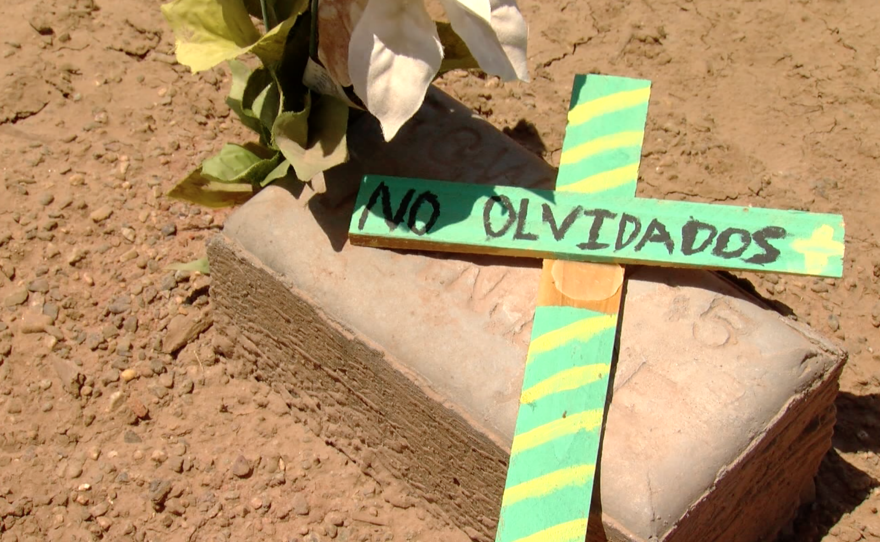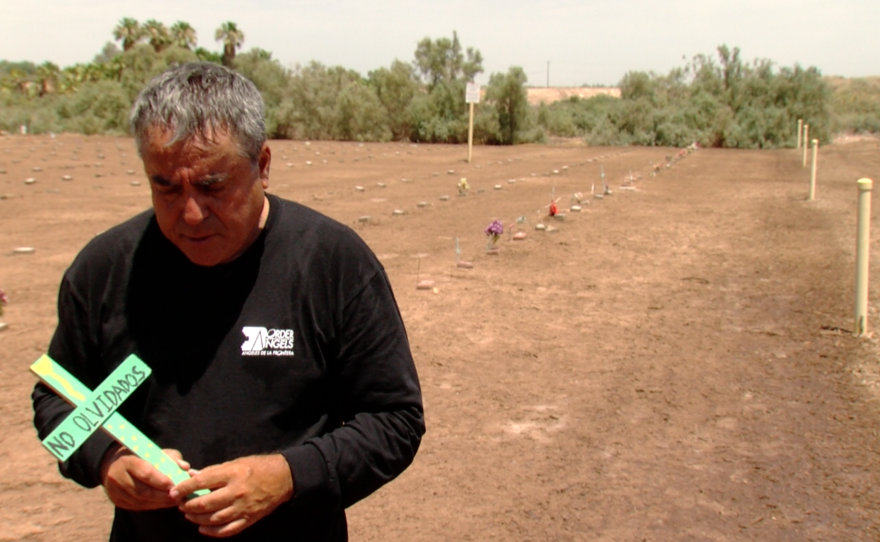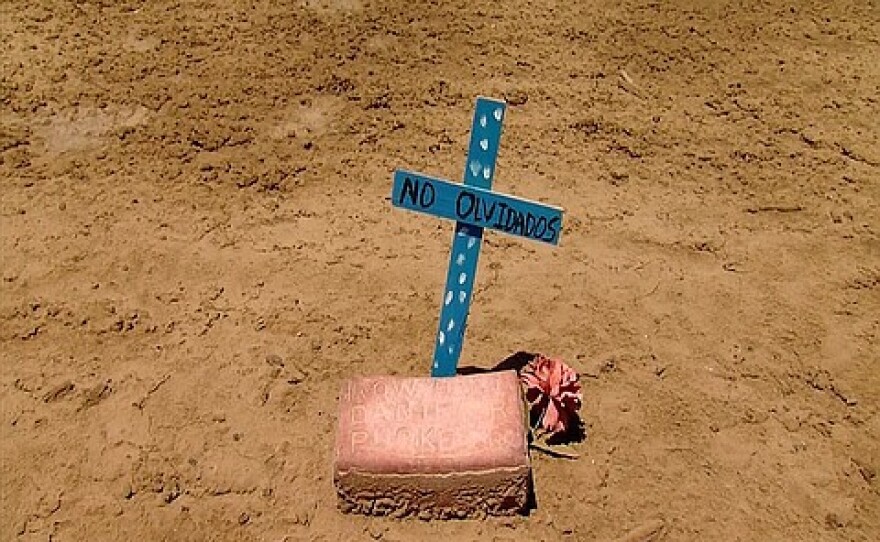More than 40,000 people have been reported missing in Mexico over the past decade. Some were kidnapped. Others vanished crossing the border. Most of their relatives will have to learn to live with unanswered questions.
Only about 1 percent of people who go missing in Mexico are found, according to federal government statistics.
Some answers may lie in the U.S. — specifically, in gated graveyards behind two Imperial County cemeteries: Evergreen Cemetery and Terrace Park Cemetery.
Enrique Morones, founder of the San Diego nonprofit Border Angels, said DNA samples of hundreds of unidentified bodies buried there would give closure to some Mexicans whose relatives disappeared trying to reach the U.S.
"It's so important for people to find out what happened to their loved one," Morones said. "Are they alive? Are they detained? What happened?"

About 300 unidentified people are buried at Evergreen Cemetery in El Centro, alongside more than 500 identified people whose families could not afford a burial, said cemetery district superintendent Chuck Jernigan.
Some of the unidentified bodies belong to migrants who died crossing the hot desert from Mexico to the U.S. Others belong to homeless Americans who lacked identification.
When the plot at Evergreen filled up in 1995, the county started burying unidentified dead at Terrace Park Cemetery in nearby Holtville. A gated graveyard at Terrace Park contains 238 unidentified bodies, plus 284 identified bodies of people whose families who couldn't pay for a burial, Jernigan said.
Morones believes a majority of the bodies in Terrace Park belong to migrants who started crossing the border in the more remote, scorching conditions of the Imperial County desert during the years of Operation Gatekeeper, which increased border enforcement around San Diego.
Unidentified bodies found in the desert are no longer buried at Terrace Park Cemetery either. As of 2009, the county cremates their remains and scatters their ashes at sea.
Morones said this disposal of the ashes poses a problem.
"We will never know what happened to that person," he said. "And more importantly, their family will never know, because there's not going to ever be a DNA sampling for them."
Morones said he has brought officials from the Mexican, Guatemalan and French consulates to Terrace Park Cemetery, asking them to sponsor DNA sampling of the bodies, currently buried beneath bricks labeled "John Doe" for men and "Jane Doe" for women.
"Even here in death they're marginalized," Morones said. "They don't get grass, or a headstone, or flowers."
He said the consulates have declined to pay for that sampling because they can't be sure all of the bodies belong to people of their respective nations.
Morones believes the majority are Mexicans because most of the people who crossed the border near Imperial County between 1995 and 2009 came from Mexico. But he said he doesn't think that should matter.

"Regardless of which country they're from, they're all the same race, the human race, and their relatives and loved ones want to know what happened to them," he said. "We owe it to them."
Morones leads groups of students to place memorial crosses on the graves and say prayers in both Spanish and English. Earlier this week, a group of medical students from UC Irvine who are interested in treating Latino patients visited Terrace Park Cemetery.
Among them was 24-year-old David Bustillo, the son of Cuban refugees. He planted a cross beside a brick labeled "John Doe" while thinking about his parents.
"Fortunately, (my parents) survived their migration over here, and I was kind of thinking, what if they weren't as fortunate?" he said.
Morones said he brings people to the cemetery to have them reflect this way.
"Before we were us, we were them," he said, pointing at the graves. "And we all have families that are in this situation at some time in our history, and it is important for us to remember that."






